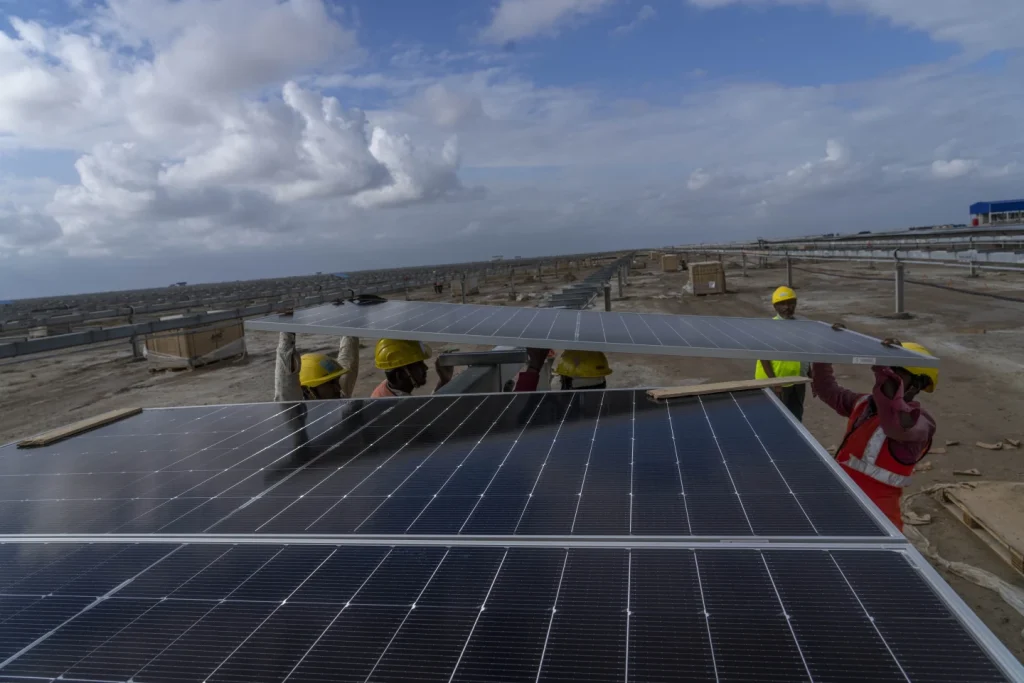In 2023, the world experienced a remarkable surge in the adoption of renewable energy, particularly solar power. This rapid expansion of renewable energy sources holds the potential to steer the Earth away from its heavy reliance on fossil fuels, consequently mitigating the severe impacts of global warming.
The proliferation of clean energy can be attributed to various factors, including its cost-effectiveness, the implementation of supportive governmental policies, and concerns regarding energy security as highlighted by the International Energy Agency.
Despite challenges such as high interest rates and logistical obstacles in sourcing materials and components, the momentum of renewable energy deployment has remained robust.
According to the International Energy Agency, the year 2023 witnessed an addition of over 440 gigawatts of renewable energy capacity, surpassing the combined installed power capacity of Germany and Spain.
This monumental growth signifies a significant shift towards sustainable energy alternatives and marks a pivotal moment in the global transition towards a cleaner and more sustainable energy landscape.
The widespread adoption of renewable energy sources, particularly solar, wind, and battery technologies, has reshaped the global energy paradigm.
Solar power, in particular, has emerged as a frontrunner in the renewable energy revolution, offering a viable and abundant source of clean energy.
The declining costs of solar panel production and installation have contributed to its increasing accessibility and attractiveness as a primary energy source.
Furthermore, advancements in energy storage technologies, such as batteries, have bolstered the reliability and effectiveness of renewable energy systems, ensuring a more stable and consistent power supply.
The integration of wind energy into the global energy mix has also played a pivotal role in diversifying the renewable energy portfolio.
With technological advancements and the establishment of wind farms in strategic locations, wind power has emerged as a substantial contributor to the renewable energy transition.
The scalability and efficiency of wind turbines have made them a compelling option for harnessing clean energy from natural wind resources.
Moreover, the advancements in battery technologies have revolutionized the storage and utilization of renewable energy.
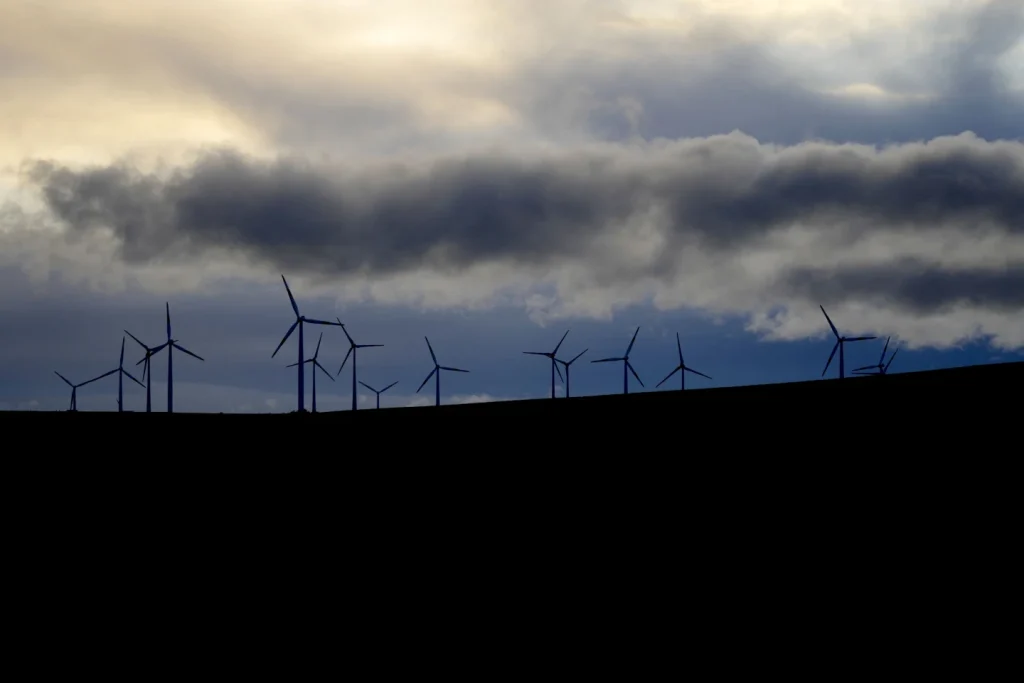
Energy storage systems, including lithium-ion batteries and other innovative solutions, have facilitated the effective integration of intermittent renewable energy sources into the existing power grid.
This has significantly enhanced the reliability and stability of renewable energy systems, paving the way for a more resilient and sustainable energy infrastructure.
The unprecedented growth of renewable energy in 2023 underscores the collective commitment of nations and stakeholders towards mitigating climate change and reducing the reliance on environmentally detrimental fossil fuels.
The shift towards renewable energy not only presents an opportunity to combat climate change but also holds immense potential for driving economic growth, creating employment opportunities, and fostering technological innovation.
As the world continues to embrace renewable energy at an accelerated pace, it is imperative for policymakers, industry leaders, and the global community to further amplify these efforts.
This entails the formulation and implementation of robust policies that incentivize renewable energy investments, promote research and development in clean energy technologies, and facilitate the deployment of sustainable energy infrastructure.
Additionally, international collaboration and knowledge sharing are essential in addressing the challenges associated with renewable energy deployment, including resource constraints, technological barriers, and grid integration complexities.
In conclusion, the remarkable surge in renewable energy adoption, particularly in solar, wind, and battery technologies, in 2023 signifies a monumental stride towards a sustainable and low-carbon future.
The continued expansion of renewable energy sources offers a beacon of hope in the fight against climate change and presents unprecedented opportunities for global energy transformation.
By harnessing the potential of renewable energy and fostering a collective commitment to sustainability, the world can pave the way for a more resilient, prosperous, and environmentally conscious future.
In summary, the year 2023 has witnessed an unprecedented surge in the adoption of renewable energy, particularly in the realms of solar, wind, and energy storage technologies.
This surge holds the potential to transform the global energy landscape, steering the world away from fossil fuels and towards a sustainable future.
The collective efforts of nations, policymakers, and industry stakeholders have propelled the growth of renewable energy, marking a significant milestone in the global transition towards a cleaner and more sustainable energy paradigm.
In the year 2023, the world witnessed a remarkable surge in solar energy installations, marking yet another monumental milestone in the global shift towards renewable energy sources.
The International Renewable Energy Agency’s report revealed record-breaking solar installations in China, Europe, and the United States, cementing the status of solar power as a pivotal player in the global energy landscape.
China, with its awe-inspiring additions of 180 to 230 gigawatts, emerged as the frontrunner in solar capacity expansion, overshadowing all other nations.
Meanwhile, Europe made its own substantial contribution, adding 58 gigawatts of solar power. The exponential growth of solar energy installations in these regions underscores a paradigm shift in the energy sector, with solar power emerging as the most cost-effective form of electricity in a majority of countries.
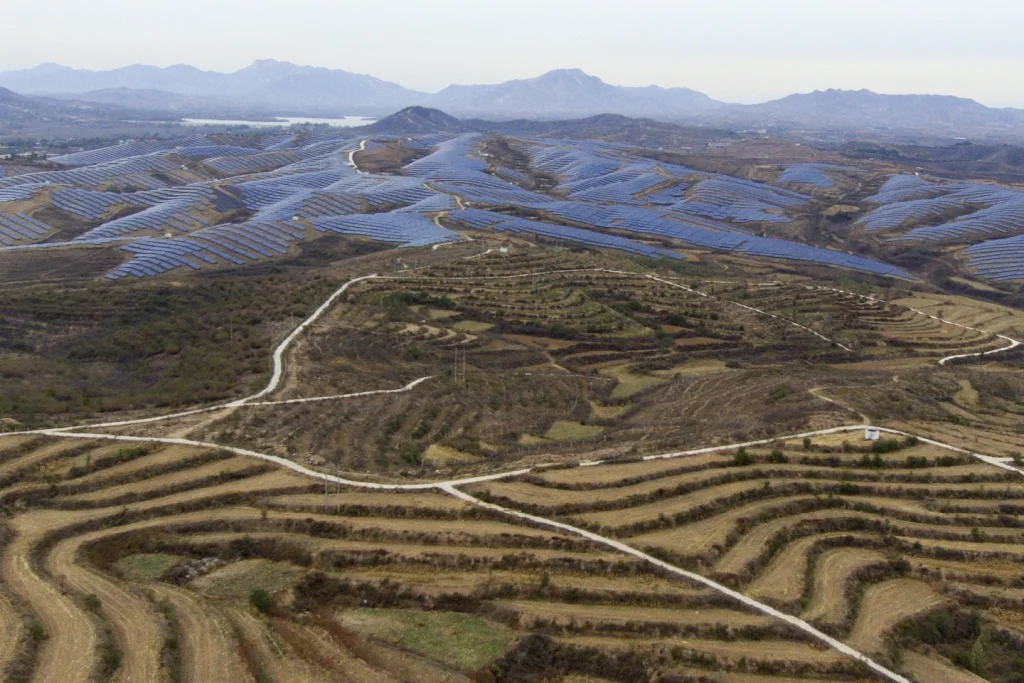
Notably, the plummeting prices of solar panels by 40% to 53% in Europe between December 2022 and November 2023 have propelled solar energy to unprecedented affordability, reaching record lows.
Michael Taylor, a senior analyst at IRENA, aptly described the rapid scaling up of solar deployment in Europe as “breakneck speed,” highlighting the fervent pace at which solar energy is being embraced and implemented.
As a result, it is anticipated that solar energy will surpass hydropower in total global capacity, signifying a momentous shift in the global energy mix.
However, it is important to note that hydropower will continue to produce more clean power in the immediate future due to its ability to generate electricity round the clock.
In the United States, California stands at the forefront of solar energy, closely followed by Texas, Florida, North Carolina, and Arizona.
The significant growth of solar energy in the U.S. can be attributed to a combination of state and federal incentives, as highlighted by Daniel Bresette, president of the Environmental and Energy Study Institute.
Nonetheless, despite the remarkable success of solar energy in 2023, several challenges have emerged. A shortage of transformers, coupled with rising interest rates, has posed hurdles to the seamless expansion of solar energy infrastructure.
Furthermore, the U.S. witnessed a substantial surge in solar manufacturing, with over 60 solar manufacturing facilities announced in response to the Inflation Reduction Act.
Abigail Ross Hopper, president and CEO of the Solar Energy Industries Association, emphasized the profound impact of this act in fueling investments and fostering the growth of solar manufacturing.
In conclusion, the year 2023 has undeniably been a banner year for solar energy, characterized by unprecedented growth and record-breaking installations in China, Europe, and the United States.
The remarkable strides made in solar energy installation and affordability have positioned solar power as a formidable contender in the global energy arena.
Despite the challenges that lie ahead, the monumental achievements of 2023 serve as a testament to the unwavering momentum of the solar energy revolution, heralding a promising future for clean, sustainable energy on a global scale.
The year 2023 marked a significant milestone in the global energy landscape, with a substantial increase in wind energy capacity, setting a record for the addition of renewable power.
Notably, China emerged as a key player in this growth, contributing to a substantial portion of the new wind energy installations.
However, despite these achievements, the wind energy sector faced numerous challenges, both short-term and long-term, which have implications for its future expansion and sustainability.
This essay aims to explore the challenges encountered by the wind energy industry in 2023 and the potential strategies for overcoming these obstacles to ensure a robust and sustainable future for wind power.
The global wind energy industry witnessed remarkable growth in 2023, with the capacity to power nearly 80 million homes being added worldwide.
China, a frontrunner in renewable energy adoption, played a pivotal role in this expansion, contributing over 58 gigawatts of new wind energy capacity.
The country’s ambitious targets and accelerated progress indicate a promising trajectory for the global wind energy sector.
Moreover, key markets such as Germany and India also demonstrated significant advancements in wind energy deployment, albeit with certain fluctuations in installation rates.
Despite the overall progress, the wind energy industry faced multifaceted challenges in 2023. Short-term obstacles, including high inflation, escalating interest rates, and increased construction costs, posed significant hurdles for developers, particularly in the offshore wind segment.
These economic headwinds led to project contract renegotiations, cancellations, and delays, impacting the industry’s momentum and financial viability.
Additionally, the nascent U.S. offshore wind industry encountered difficulties amid economic uncertainties, constraining the timely launch of commercial-scale offshore wind farms.
Furthermore, the European wind energy market experienced a decline in installations, signaling a 6% year-over-year decrease.
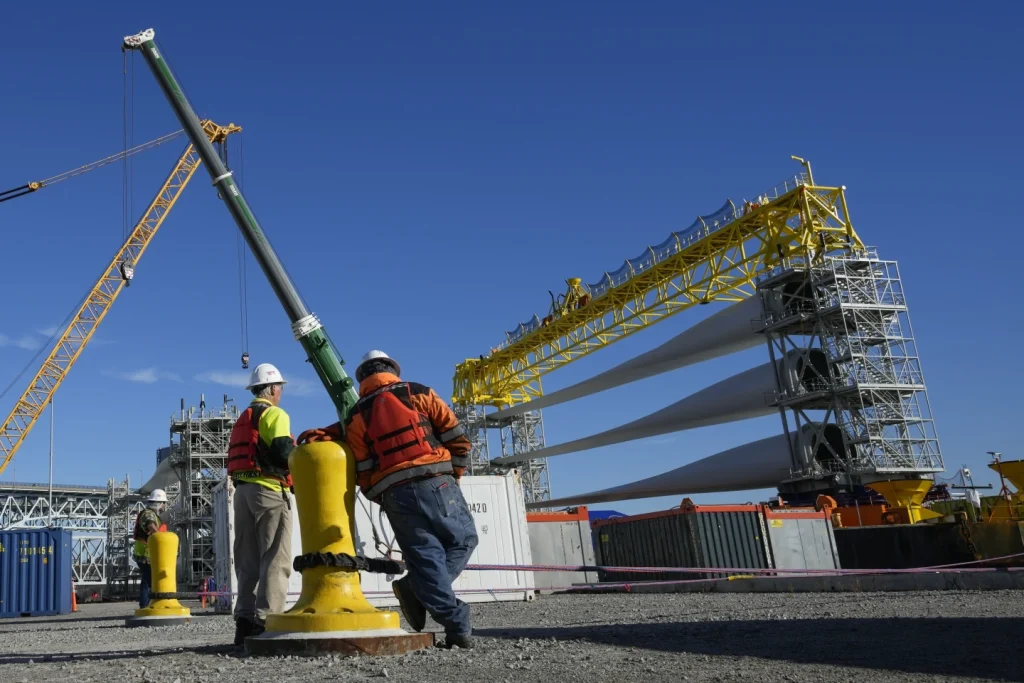
This downturn, coupled with the challenges in the U.S. market, underscored the complex and dynamic nature of the global wind energy landscape.
The industry also faced regulatory and logistical complexities, hindering the seamless execution of wind energy projects.
The challenges encountered in 2023 have broader implications for the long-term growth and sustainability of the wind energy sector.
The delays and setbacks in project timelines, coupled with economic uncertainties, have raised concerns about the industry’s ability to meet future energy demands and climate targets.
Moreover, the slowdown in wind energy installations in key markets such as the United States and Europe has highlighted the need for proactive measures to address regulatory, financial, and operational challenges.
To navigate the challenges and uncertainties facing the wind energy industry, stakeholders must consider strategic interventions to ensure sustained growth and resilience.
The following strategies can be instrumental in overcoming the obstacles and fostering a conducive environment for wind energy expansion:
- Policy Support and Regulatory Alignment: Governments and regulatory bodies should provide consistent policy support and streamline regulatory processes to facilitate the timely execution of wind energy projects. Clear and stable policy frameworks can mitigate uncertainties and attract investments in the sector.
- Technological Innovation and Cost Optimization: Continued investment in research and development is essential to drive technological innovation and cost optimization in wind energy. Advancements in turbine design, materials, and maintenance practices can enhance efficiency and reduce operational expenses, making wind energy more competitive in the market.
- Financial Incentives and Risk Mitigation: Access to favorable financing options, including tax credits and incentives, can alleviate the financial burden on wind energy developers. Additionally, risk mitigation mechanisms, such as insurance products tailored for renewable energy projects, can safeguard investments and bolster investor confidence.
- Collaboration and Knowledge Sharing: Industry collaboration and knowledge sharing initiatives can foster best practices, standardization, and capacity building across the wind energy value chain. Collaborative efforts can address common challenges, drive innovation, and enhance the overall resilience of the sector.
- Market Diversification and Global Cooperation: Diversifying market opportunities and fostering international cooperation can mitigate the impact of regional fluctuations and geopolitical dynamics. Strategic partnerships and cross-border collaborations can create a more stable and resilient ecosystem for wind energy development.
The challenges faced by the wind energy industry in 2023 underscore the need for proactive measures and collaborative efforts to navigate the complexities of the global energy landscape.
While short-term economic headwinds and regulatory uncertainties have posed obstacles, the long-term potential of wind energy remains promising.
By embracing technological innovation, policy support, and strategic collaboration, the industry can overcome these challenges and pave the way for sustainable and scalable wind energy expansion.
As the world looks towards a cleaner and more sustainable energy future, addressing the challenges for wind energy will be crucial in realizing the full potential of this renewable resource.
In conclusion, the wind energy sector’s journey in 2023 reflects a mix of achievements, setbacks, and opportunities, highlighting the dynamic nature of the renewable energy transition.
By addressing the challenges and leveraging strategic interventions, the industry can chart a resilient and sustainable course towards a greener energy future.
The year 2023 has proven to be a monumental year for the battery industry, particularly in the context of the burgeoning electric vehicle (EV) market and the ongoing global efforts to mitigate the detrimental impact of transportation on the environment.
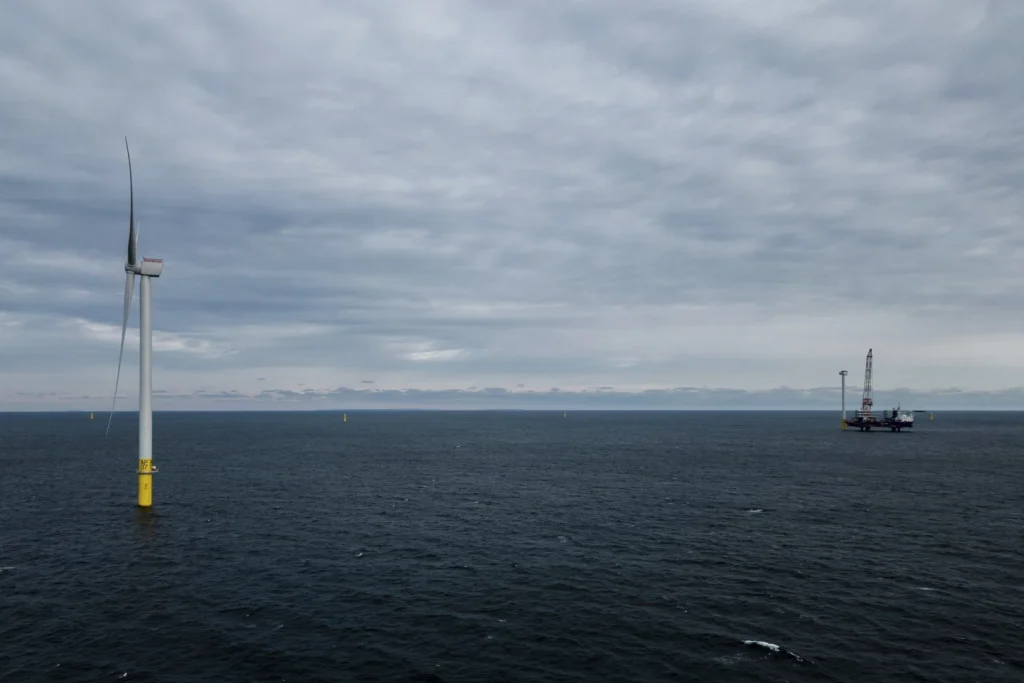
With the International Energy Agency predicting that one in every five cars sold this year will be electric, it is evident that the momentum of the electric vehicle trend has accelerated on a global scale.
This surge in electric vehicle sales has consequently propelled the battery industry to new heights, marking 2023 as a pivotal year for advancements in battery technology and infrastructure.
The significant investment of over $43.4 billion in battery manufacturing and recycling in the United States alone, largely attributed to the Inflation Reduction Act, underscores the substantial commitment to bolstering the country’s position in the battery market.
While this investment has brought the U.S. closer to parity with Europe, it is apparent that China remains a dominant force in the battery industry, with a formidable lead in the development of large-scale battery factories, known as gigafactories.
The proliferation of gigafactories in the U.S. and Europe, with 38 in progress in each region by late November, signifies a concerted effort to bolster domestic battery production and reduce reliance on imports.
However, the substantial lead held by China, with 295 gigafactories in development, highlights the formidable challenge of catching up to China’s dominance in the global battery market.
The industry’s commitment to sustainability and environmental responsibility is evident in its exploration of alternative methods for battery production that minimize reliance on harmful materials.
Additionally, efforts to enhance the sustainability of battery components and the progress made in battery recycling further underscore the industry’s dedication to mitigating its environmental impact.
Moreover, the reduction in the cost of key battery raw materials, such as lithium, has been a significant development, with experts noting that this trend is paving the way for broader affordability of electric vehicles.
This reduction in battery costs has the potential to make electric vehicles more accessible to a wider segment of the population, marking a significant milestone in the transition towards sustainable transportation.
Despite the industry’s remarkable progress, the journey in 2023 has not been without its challenges. The U.S. industry, in particular, has faced various obstacles, including energy challenges at a major Panasonic battery facility in Kansas, talent acquisition concerns at Toyota’s North Carolina site, and health and safety violations at a joint venture plant between General Motors Co. and LG Energy Solution in Ohio.
These issues serve as a reminder of the complexities and hurdles that accompany the rapid growth of the battery industry.
Furthermore, challenges persist across regions, including obstacles related to mineral sourcing, the establishment of responsible supply chains, and the expansion of charging infrastructure.
Addressing these challenges will be crucial in sustaining the momentum of the battery industry’s growth and ensuring the widespread adoption of electric vehicles.
Looking ahead, experts remain optimistic about the continued growth of the battery industry on a global scale.
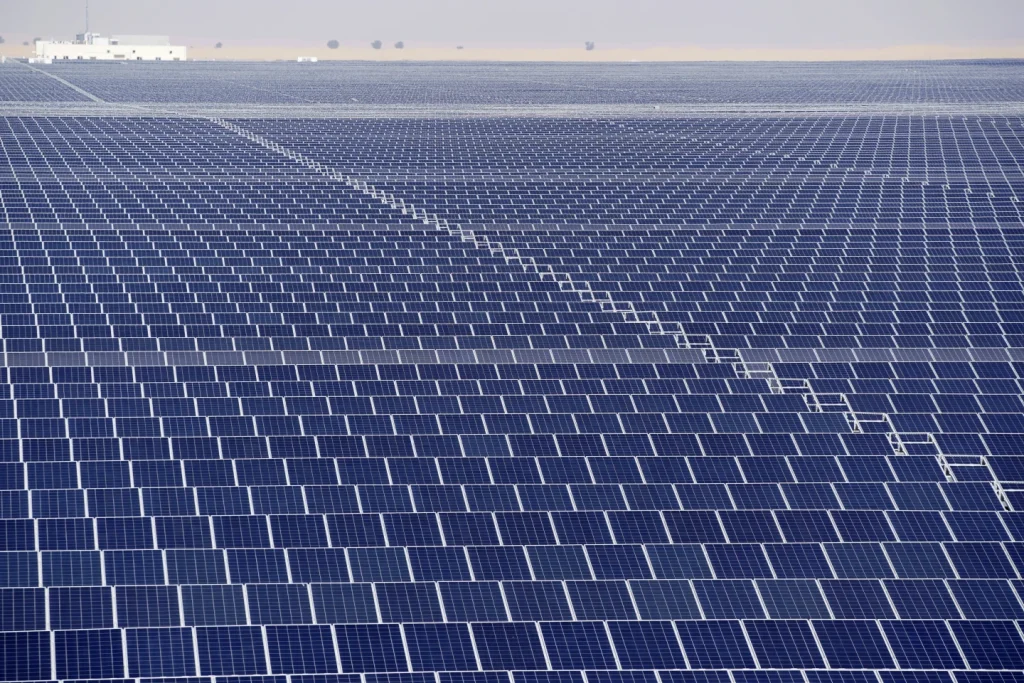
The transformative shift witnessed in 2023 has set the stage for a momentous evolution in battery technology and infrastructure.
The parallels drawn between the story of batteries in the U.S. and the global landscape of the battery industry underscore the far-reaching impact of the industry’s advancements in 2023.
In conclusion, the year 2023 has emerged as a pivotal juncture for the battery industry, characterized by substantial investments, technological advancements, and a steadfast commitment to sustainability.
As the electric vehicle market continues to expand, the battery industry’s role in driving this transformation is undeniable.
The progress made in 2023 serves as a testament to the industry’s resilience and capacity for innovation, laying the groundwork for a future defined by sustainable transportation and energy storage solutions.
